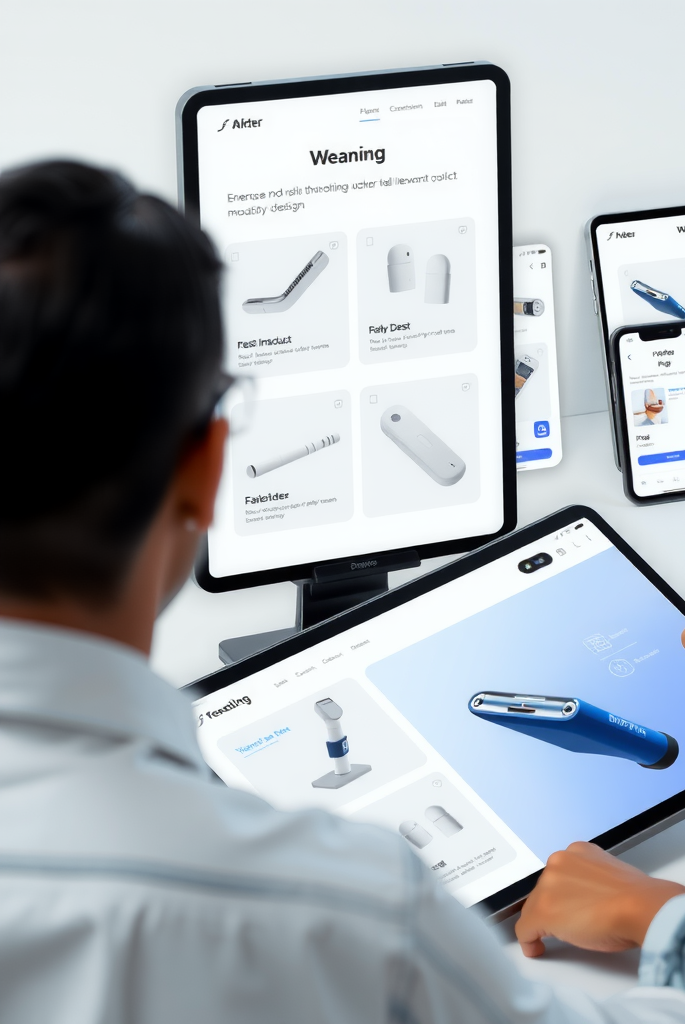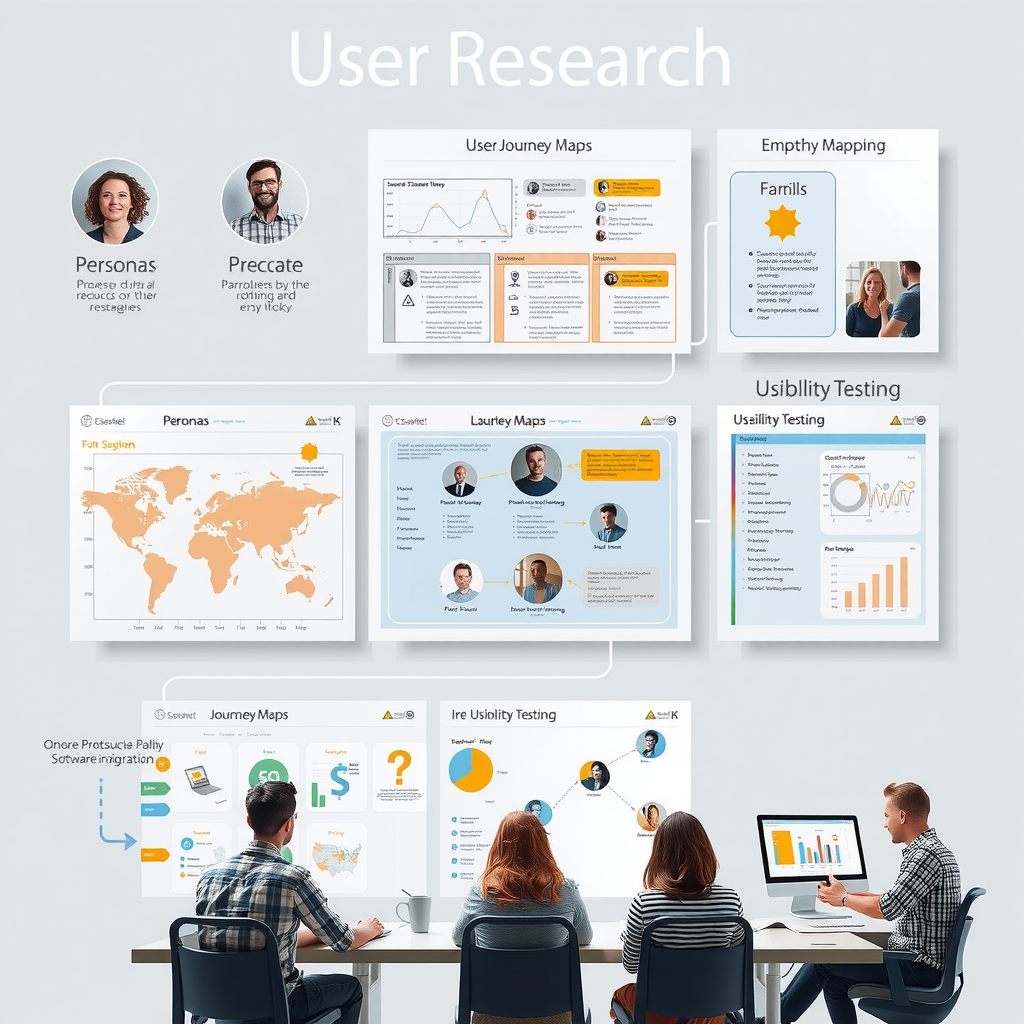The Role of User Experience in Modern Software Development

In today's competitive digital landscape, user experience has evolved from a nice-to-have feature to an absolute necessity. The success of software products increasingly depends not just on functionality, but on how intuitively and delightfully users can interact with them.
User experience (UX) represents the intersection where design thinking meets technical implementation. It encompasses every aspect of the end-user's interaction with a company, its services, and its products. In modern software development, UX has become the cornerstone that determines whether a product thrives or fails in the marketplace.
Understanding User-Centered Design
User-centered design (UCD) is a framework of processes in which usability goals, user characteristics, environment, tasks, and workflow are given extensive attention at each stage of the design process. This methodology ensures that the final product aligns with user needs, expectations, and behaviors rather than forcing users to adapt to the software.
The UCD approach involves continuous user research, iterative design, and constant validation through user testing. By placing users at the heart of the development process, teams can create solutions that genuinely solve problems and provide value. This investment in understanding users pays dividends through increased adoption rates, higher satisfaction scores, and stronger customer loyalty.

The Impact of Intuitive Interfaces
An intuitive interface is one that users can navigate without extensive training or documentation. It leverages familiar patterns, clear visual hierarchy, and logical information architecture to guide users naturally through tasks. When interfaces are intuitive, users experience less friction, make fewer errors, and accomplish their goals more efficiently.
Creating intuitive interfaces requires deep understanding of mental models—the assumptions users bring based on their previous experiences. Successful software aligns with these mental models while introducing innovation carefully and deliberately. This balance between familiarity and innovation is what separates good interfaces from exceptional ones.
"Design is not just what it looks like and feels like. Design is how it works." — Steve Jobs
Accessibility: Designing for Everyone
Accessibility standards ensure that software products can be used by people with diverse abilities and disabilities. This includes considerations for visual, auditory, motor, and cognitive impairments. Implementing accessibility isn't just ethically important—it's also legally required in many jurisdictions and expands your potential user base significantly.
Modern accessibility standards like WCAG (Web Content Accessibility Guidelines) provide comprehensive frameworks for creating inclusive digital experiences. These standards cover everything from color contrast ratios and keyboard navigation to screen reader compatibility and alternative text for images. By building accessibility into the development process from the start, teams avoid costly retrofitting and create better experiences for all users.

Design Thinking Methodology
Design thinking is a human-centered approach to innovation that draws from the designer's toolkit to integrate the needs of people, the possibilities of technology, and the requirements for business success. This methodology consists of five key phases: empathize, define, ideate, prototype, and test.
The empathize phase involves deep user research to understand needs, motivations, and pain points. The define phase synthesizes research findings into clear problem statements. Ideation generates diverse potential solutions through brainstorming and creative exercises. Prototyping brings ideas to life in tangible forms that can be tested with users. Finally, testing validates assumptions and provides insights for refinement.
This iterative process ensures that solutions are grounded in real user needs rather than assumptions. By cycling through these phases multiple times, teams progressively refine their understanding and improve their solutions. The result is software that truly resonates with users and solves meaningful problems.
The Technical Implementation Challenge
Translating exceptional design into functional software requires close collaboration between designers and developers. This partnership ensures that the vision articulated in design mockups becomes reality in the final product. Technical constraints must be considered during design, while developers must understand the reasoning behind design decisions.
Modern development frameworks and component libraries have made it easier to implement sophisticated UX patterns. Technologies like React, Vue, and Angular provide powerful tools for creating responsive, interactive interfaces. Design systems and component libraries ensure consistency across large applications while accelerating development.

Measuring UX Success
Quantifying user experience allows teams to track improvements and justify investments in UX initiatives. Key metrics include task completion rates, time on task, error rates, and user satisfaction scores. Analytics tools provide insights into how users actually interact with software, revealing patterns and pain points that might not surface in testing.
Beyond quantitative metrics, qualitative feedback through user interviews and surveys provides context and depth. Net Promoter Score (NPS) measures user loyalty and likelihood to recommend the product. System Usability Scale (SUS) provides a standardized measure of perceived usability. Together, these metrics paint a comprehensive picture of UX effectiveness.
Creating Exceptional Digital Experiences
Exceptional digital experiences share common characteristics: they're fast, responsive, and reliable. They anticipate user needs and provide helpful guidance without being intrusive. They handle errors gracefully and provide clear paths to recovery. Most importantly, they make users feel capable and in control.
Achieving this level of excellence requires attention to countless details—from the micro-interactions that provide feedback to the overall information architecture that makes content discoverable. It requires performance optimization to ensure quick load times and smooth animations. It requires thoughtful copywriting that guides and informs without overwhelming.
The investment in creating exceptional experiences pays off through increased user engagement, higher conversion rates, and stronger brand loyalty. Users don't just tolerate well-designed software—they actively enjoy using it and recommend it to others. This word-of-mouth marketing is invaluable in today's crowded digital marketplace.
Key Takeaways
- User experience is now a critical differentiator in software success
- User-centered design ensures products align with actual user needs
- Intuitive interfaces reduce friction and improve task completion
- Accessibility standards expand reach and improve experiences for everyone
- Design thinking provides a structured approach to innovation
- Close designer-developer collaboration is essential for implementation
- Measuring UX through metrics enables continuous improvement
The Future of UX in Software Development
As technology continues to evolve, so too will user expectations. Emerging technologies like artificial intelligence, voice interfaces, and augmented reality present new UX challenges and opportunities. The fundamental principles of user-centered design remain constant, but their application must adapt to new contexts and interaction paradigms.
The most successful software development teams will be those that embrace UX as a core competency rather than an afterthought. They'll invest in user research, iterate based on feedback, and continuously refine their products. They'll recognize that in a world where users have countless options, exceptional user experience is what transforms good software into products that users love and recommend to others.
The role of user experience in modern software development cannot be overstated. It's the bridge between technical capability and human need, between what's possible and what's desirable. By prioritizing UX throughout the development process, teams create software that doesn't just function—it delights, empowers, and transforms the way people work and live.